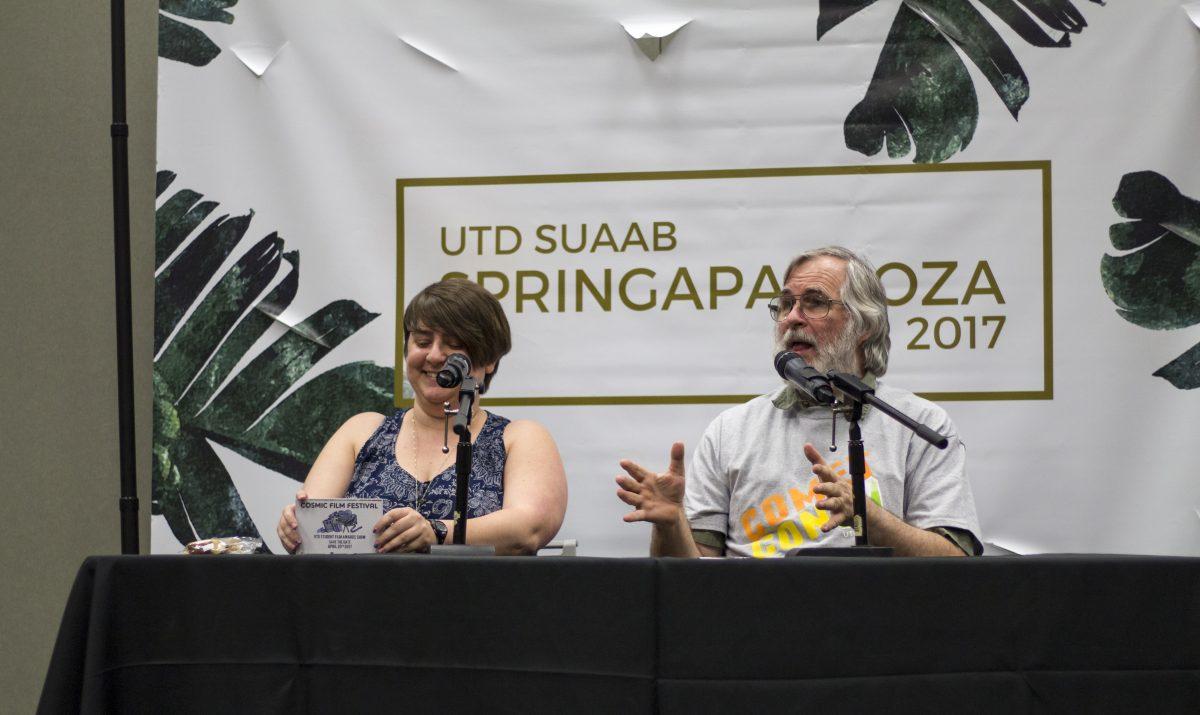A space research scientist and an Arts and Humanities professor have teamed up for almost a decade to co-teach a literature course that focuses on anime, manga and Japanese culture. They hope to broaden students’ collegiate experience by exposing them to people of different backgrounds through the course.
On March 24, research scientist Marc Hairston and a former student gave a talk about the topic at Comet Con.
The use of anime in coursework began in 1998, when Hairston loaned his friend, Arts and Performance Professor Pamela Gossin, a copy of the famous anime film “Nausicaa” because he thought it related to the humanities course she was teaching about the nature of nature.
Enthralled by the film, Gossin incorporated it in her course, and nine years later, the two decided to offer the overview course Literature of Fantasy: Anime and Manga. The class uses Japanese animation, graphic novels, poetry and light novels as the primary subject matter for students studying the themes of literature and storytelling.
Hairston graduated with two undergraduate degrees in physics and literature. As a result, he said he recognizes the need for students to understand literature through other mediums.
“I think it’s important that the students can feel jazzed up about the literary subject, which is what happens oftentimes with anime,” Hairston said.
Alyssa Phillips, a mechanical engineering senior, enrolled in the course in 2008 when she was pursuing her first degree at UTD in arts and performance.
“Literature courses can often feel boring. Usually, you’re studying books that were written before you were born,” she said. “On the other hand, anime is something that you can relate with. It’s something more modern, and a lot of students have personal interest in it.”
Hairston said the class is often the only literature course that the students take besides the graduation requirement, but it’s a critical part of their college experience.
“We have students from a lot of different majors take the course: business, engineering, ATEC and anything you could imagine,” he said. “If you take (this type of) class, then you’re going to learn the background of people. Anything that exposes you to the wider world and allows you to understand and empathize with other people is good, and that’s a true college education.”
While students are generally surprised at the depth of anime storytelling, Hairston said it’s difficult to expand the class as much as he wants to.
“We always feel like we have to cram so much in one class,” he said. “With all the new material coming out, it’s like drinking from a fire hose. There are over 10,000 titles of anime out there.”
One aspect of the class that is both a boon and a burden are the cultural differences, Phillips said, making it difficult to always engage with the text.
“Anime comes, obviously, from Japanese creators and culture. Some things can be very different, like gender roles, the role of the family, even the independence of school-age kids,” she said.
The culture disparity teaches an important lesson to students at UTD as well as viewers around the world, Hairston said.
“We get this incorrect notion that everyone views things the way we do,” he said. “Through studying anime, you start to see that there is a variety and hopefully, it increases our understanding of each other. The coolest thing about anime is that it promotes a transnational youth culture.”
Every semester the course is offered, about 70 to 80 students enroll. Hairston said the diversity of the students is a unique opportunity for them to realize how similar they can be. One example was a Japanese concept from an anime about a college student in Tokyo.
“We talked about this and all of a sudden, the whole class erupted,” he said. “People were talking and saying ‘I used to be like this’ and ‘I thought I was the only one.’ It was just amazing to see that these students’ experiences were being reflected in a completely different culture, halfway around the world.”







